Your cart is currently empty!
Tag: Threats
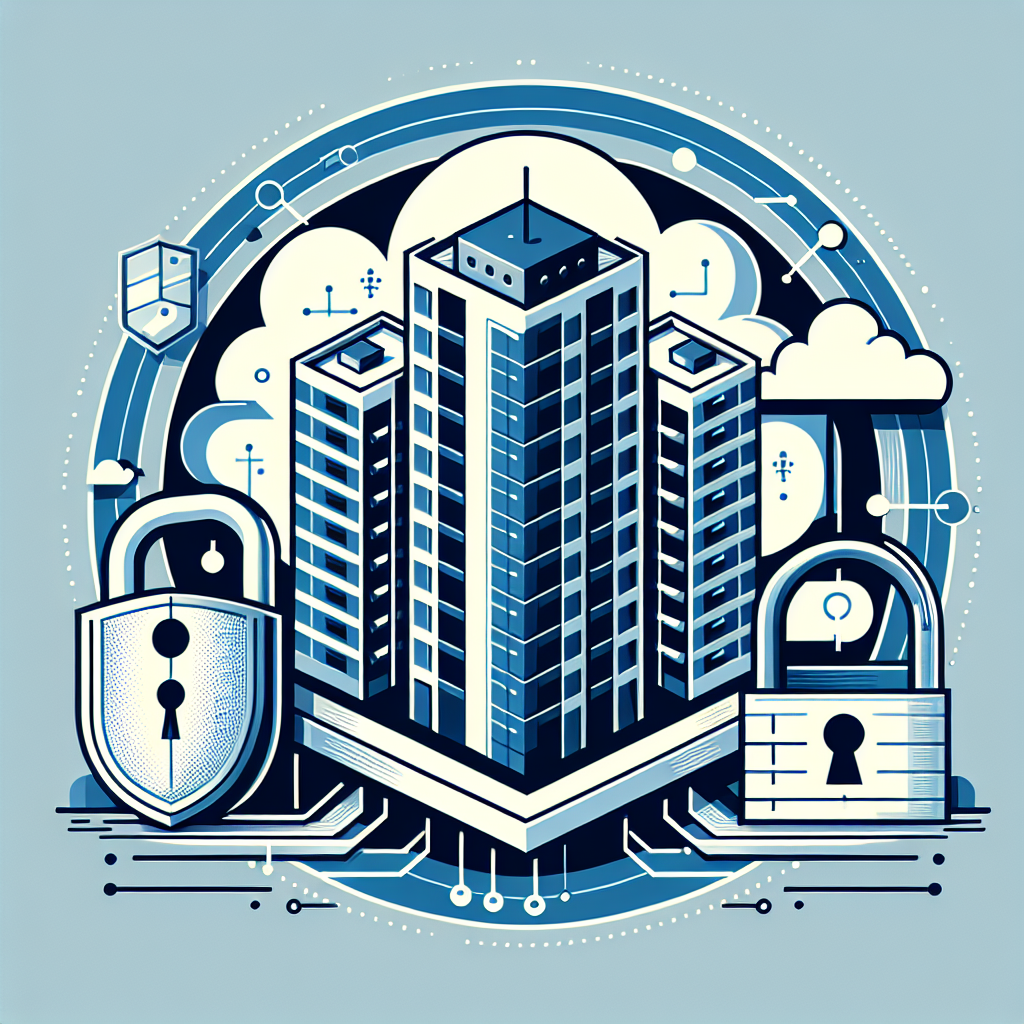
Protecting Your Data Center from Physical Threats: A Guide to Safety and Security
Data centers are the backbone of modern businesses, housing crucial information and infrastructure that keep operations running smoothly. With the increasing frequency of physical threats such as theft, vandalism, and natural disasters, it is more important than ever to prioritize safety and security measures to protect your data center.Here are some key steps to safeguard your data center from physical threats:
1. Access Control: Limiting access to your data center is a fundamental security measure. Implement strict access control protocols such as keycard access, biometric scanning, and security personnel to ensure only authorized personnel can enter the facility. Regularly review and update access permissions to minimize the risk of unauthorized access.
2. Surveillance Systems: Installing surveillance cameras throughout your data center can provide real-time monitoring and recording of any suspicious activity. Make sure cameras cover all critical areas of the facility and have a backup power source to ensure continuous surveillance.
3. Alarms and Notifications: Set up alarm systems that can alert security personnel and key stakeholders in case of unauthorized entry, fire, or other emergencies. Consider integrating your alarm systems with monitoring software for remote access and control.
4. Environmental Monitoring: Data centers are vulnerable to environmental threats such as temperature fluctuations, humidity levels, and water leaks. Implement environmental monitoring systems to detect and address potential risks before they cause damage to your equipment.
5. Fire Suppression Systems: Fire is a major threat to data centers, posing a risk to both equipment and personnel. Install fire suppression systems such as sprinklers, fire extinguishers, and smoke detectors to quickly contain and extinguish fires before they spread.
6. Physical Security Measures: In addition to electronic security measures, consider physical barriers such as fences, gates, and bollards to prevent unauthorized access to your data center. Regularly inspect and maintain these barriers to ensure they are effective.
7. Disaster Recovery Planning: Develop a comprehensive disaster recovery plan that outlines protocols for responding to physical threats such as natural disasters, power outages, and cyber attacks. Regularly test and update your plan to ensure it remains effective in mitigating risks.
By implementing these safety and security measures, you can protect your data center from physical threats and ensure the continued availability and integrity of your critical information and infrastructure. Prioritizing the safety and security of your data center is essential for maintaining business continuity and protecting your organization from potential risks.
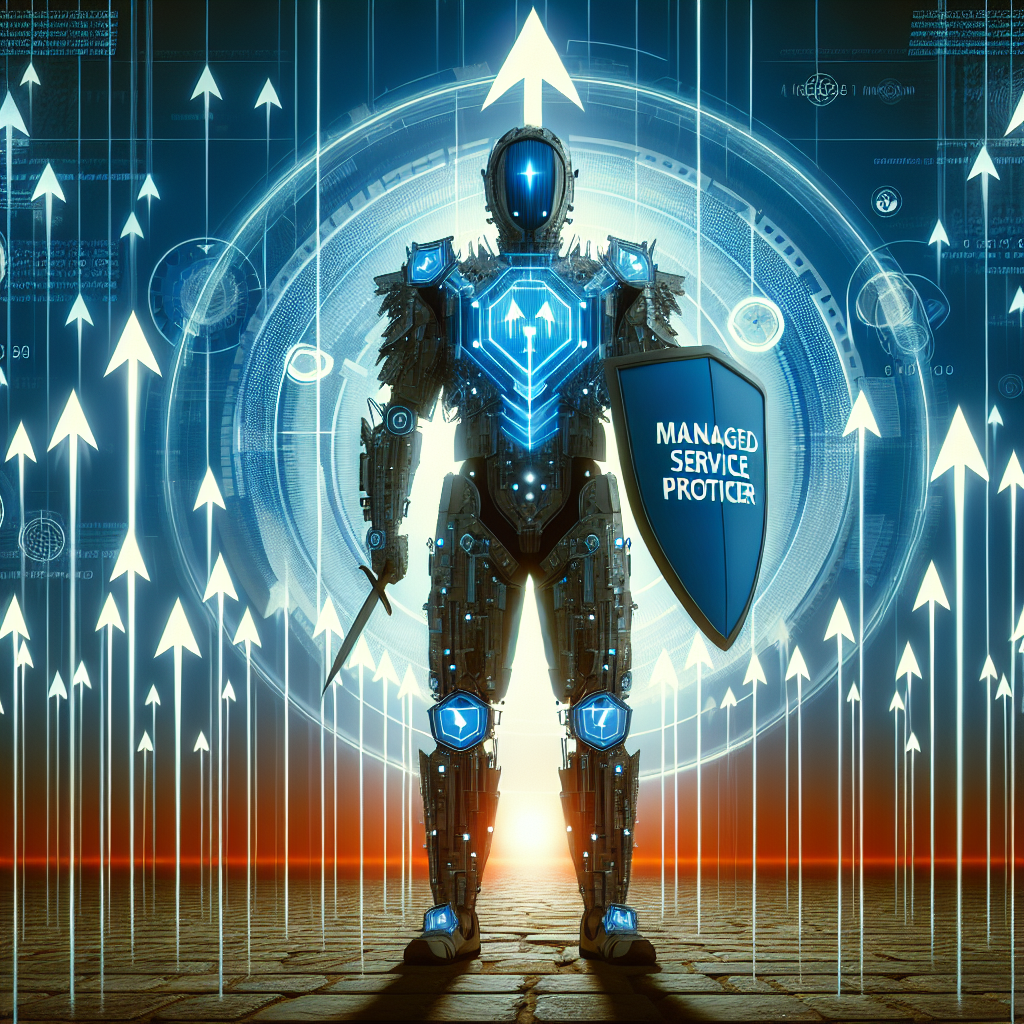
The Role of MSPs in Cybersecurity: Protecting Your Business from Threats
In today’s digital age, cybersecurity is a top priority for businesses of all sizes. With the increasing number of cyber threats and attacks, it has become essential for companies to invest in robust cybersecurity measures to protect their sensitive data and systems. Managed Service Providers (MSPs) play a crucial role in helping businesses stay ahead of cyber threats and ensure their networks are secure.MSPs offer a range of cybersecurity services, including threat monitoring, incident response, vulnerability assessments, and security training. By partnering with an MSP, businesses can benefit from around-the-clock monitoring of their networks, quick response to potential threats, and access to the latest cybersecurity technologies and tools.
One of the key advantages of working with an MSP is their expertise and experience in cybersecurity. MSPs have a team of skilled professionals who are trained in identifying and mitigating cyber threats. They have the knowledge and resources to implement best practices and industry standards to protect businesses from potential attacks.
Moreover, MSPs can provide businesses with a proactive approach to cybersecurity. Instead of waiting for a cyber attack to occur, MSPs can help businesses identify potential vulnerabilities in their networks and systems and take steps to address them before they are exploited by cybercriminals.
In addition, MSPs can help businesses stay compliant with industry regulations and standards related to cybersecurity. With the ever-changing landscape of cybersecurity laws and regulations, it can be challenging for businesses to keep up with the latest requirements. MSPs can help businesses navigate these complexities and ensure they are meeting all necessary compliance standards.
Overall, MSPs play a crucial role in helping businesses protect themselves from cyber threats. By partnering with an MSP, businesses can benefit from expert cybersecurity services, proactive threat monitoring, and compliance assistance. In today’s digital world, investing in cybersecurity is essential to safeguarding sensitive data and ensuring the long-term success of a business.
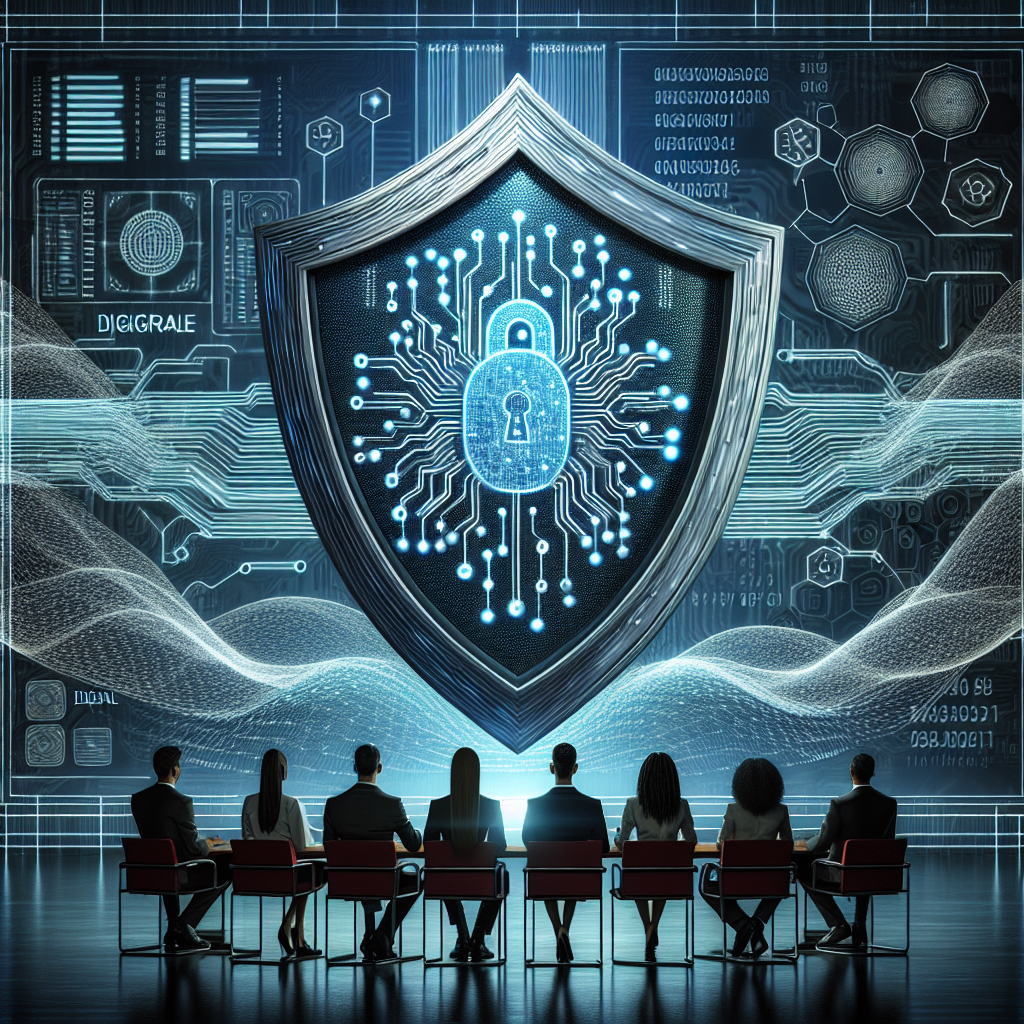
The Importance of Cisco Firewalls in Protecting Against Cyber Threats
In today’s digital world, cyber threats are becoming more sophisticated and rampant. Hackers are constantly looking for ways to breach networks and steal sensitive information. As a result, businesses need to invest in robust cybersecurity measures to protect their data and systems. One essential tool in this fight against cyber threats is a Cisco firewall.Cisco firewalls are powerful security devices that monitor and control incoming and outgoing network traffic based on predetermined security rules. They act as a barrier between a trusted internal network and untrusted external networks, such as the internet. By inspecting and filtering traffic, Cisco firewalls can prevent unauthorized access, malware, and other cyber threats from entering a network.
One of the key benefits of using Cisco firewalls is their ability to provide comprehensive protection for a network. They can detect and block malicious traffic in real-time, preventing cyber attacks such as DDoS attacks, ransomware, and phishing attempts. In addition, Cisco firewalls can also monitor and log network activity, allowing administrators to identify potential security vulnerabilities and take proactive measures to mitigate them.
Another important aspect of Cisco firewalls is their scalability and flexibility. They can be easily integrated into existing network infrastructure and customized to meet the specific security needs of a business. Whether a company is a small startup or a large enterprise, Cisco firewalls can be tailored to provide the right level of protection without compromising network performance.
Furthermore, Cisco firewalls offer advanced features such as intrusion prevention, VPN support, and deep packet inspection, making them a comprehensive solution for network security. They can also be centrally managed through a single interface, simplifying the administration and monitoring of multiple firewalls across a network.
In conclusion, Cisco firewalls play a crucial role in protecting against cyber threats by providing a strong defense mechanism for networks. Investing in Cisco firewalls can help businesses safeguard their data, maintain regulatory compliance, and mitigate the risk of cyber attacks. By implementing robust cybersecurity measures, businesses can ensure the integrity and confidentiality of their sensitive information in today’s constantly evolving threat landscape.
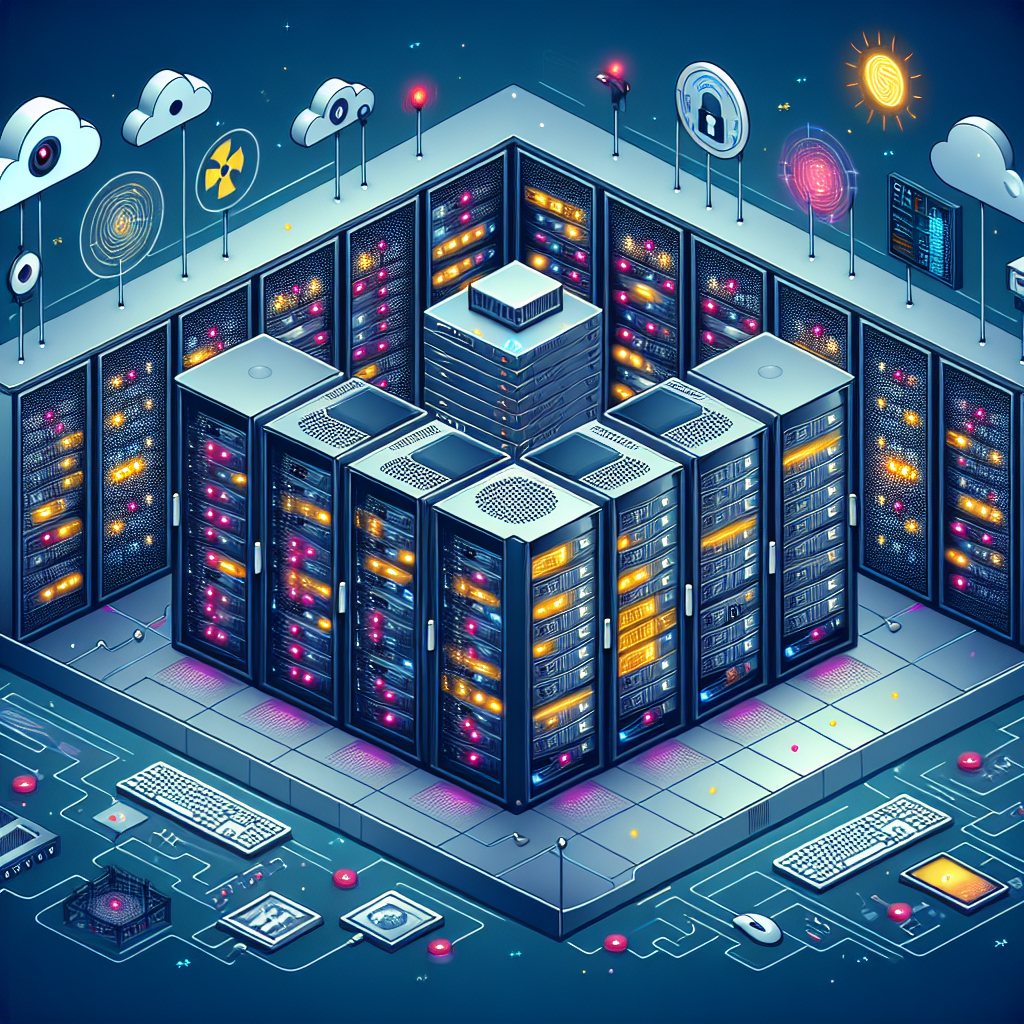
How Data Center Security Systems Are Evolving to Meet Modern Threats
In today’s digital age, data centers play a crucial role in storing and managing vast amounts of information for businesses and individuals alike. With the rise of cyber threats and attacks, data center security systems are constantly evolving to meet modern challenges and protect sensitive data from potential breaches.One of the key ways in which data center security systems are evolving is through the implementation of advanced encryption technologies. Encryption helps to secure data by converting it into a code that is difficult for unauthorized users to decipher. This ensures that even if data is intercepted, it remains protected and unreadable to hackers.
Another important aspect of data center security is the use of multi-factor authentication. This involves requiring users to provide multiple forms of identification, such as a password, fingerprint, or security token, before granting access to the data center. By adding multiple layers of authentication, data centers can significantly reduce the risk of unauthorized access.
Furthermore, many data centers are now implementing biometric security measures, such as fingerprint or facial recognition technology, to further enhance security. Biometric authentication is more secure than traditional password-based systems, as it relies on unique physical characteristics that are difficult to replicate.
In addition to these technological advancements, data center security systems are also evolving in terms of physical security measures. This includes implementing access control systems, surveillance cameras, and security guards to monitor and protect the premises. By combining both digital and physical security measures, data centers can create a comprehensive security strategy that safeguards against a wide range of threats.
Moreover, data centers are increasingly turning to artificial intelligence and machine learning technologies to detect and respond to potential security threats in real-time. These advanced technologies can analyze vast amounts of data and identify abnormal patterns or behaviors that may indicate a security breach. By automating threat detection and response processes, data centers can proactively defend against cyber attacks and minimize the impact of security incidents.
Overall, data center security systems are continuously evolving to meet the growing challenges posed by modern threats. By leveraging advanced encryption technologies, multi-factor authentication, biometric security measures, physical security measures, and artificial intelligence technologies, data centers can enhance their security posture and protect valuable data from cyber threats. As technology continues to advance, data centers will need to stay ahead of the curve and adapt their security systems to effectively safeguard against evolving threats in the digital landscape.

From Power Outages to Cyber Attacks: The Top Threats to Data Center Uptime
Data centers are the backbone of the modern digital world, housing the servers and infrastructure that support everything from email and social media to e-commerce and cloud computing. As such, ensuring the uptime and availability of these data centers is crucial for businesses and organizations to maintain their operations and deliver services to customers.However, data centers are vulnerable to a variety of threats that can disrupt their operations and cause downtime. From power outages to cyber attacks, the risks facing data centers are diverse and ever-evolving. In this article, we will explore some of the top threats to data center uptime and discuss how organizations can mitigate these risks to ensure the reliability and availability of their critical IT infrastructure.
Power Outages
Power outages are one of the most common threats to data center uptime, and they can be caused by a variety of factors, including severe weather, equipment failures, and human error. When a data center loses power, the servers and networking equipment that support its operations are unable to function, leading to downtime and potential data loss.
To mitigate the risk of power outages, many data centers are equipped with uninterruptible power supply (UPS) systems and backup generators that can provide emergency power in the event of an outage. Additionally, organizations can implement redundant power supplies and distribute power across multiple sources to ensure that critical systems remain operational even if one power source fails.
Cyber Attacks
Cyber attacks are another major threat to data center uptime, as hackers and malicious actors seek to gain unauthorized access to sensitive data or disrupt operations for financial gain or political motives. Common types of cyber attacks targeting data centers include distributed denial of service (DDoS) attacks, malware infections, and ransomware attacks.
To defend against cyber attacks, organizations can implement robust cybersecurity measures, such as firewalls, intrusion detection systems, and encryption protocols. Regular security audits and vulnerability assessments can help identify and address potential weaknesses in the data center infrastructure, while employee training programs can educate staff on best practices for cybersecurity hygiene.
Natural Disasters
Natural disasters, such as earthquakes, hurricanes, and wildfires, pose a significant threat to data center uptime, as they can cause physical damage to the facility and disrupt power and connectivity infrastructure. In the event of a natural disaster, data center operators must have contingency plans in place to ensure the safety of personnel and the continuity of operations.
To protect against natural disasters, organizations can implement disaster recovery and business continuity plans that outline procedures for evacuating personnel, restoring critical systems, and recovering data in the event of a catastrophic event. Data centers can also be designed with redundant power and cooling systems, as well as geographically distributed backup sites, to ensure continuity of operations in the face of a disaster.
In conclusion, data centers face a wide range of threats to uptime, from power outages to cyber attacks to natural disasters. By implementing robust security measures, redundancy in critical systems, and comprehensive disaster recovery plans, organizations can mitigate these risks and ensure the reliability and availability of their data center infrastructure. Investing in the protection of data center uptime is essential for businesses and organizations to maintain their operations and deliver seamless services to customers in the digital age.

Top Cybersecurity Threats to Watch Out For in 2021
As technology continues to advance at a rapid pace, so do the threats to cybersecurity. In 2021, businesses and individuals alike need to be vigilant and aware of the top cybersecurity threats that could potentially compromise their data and personal information.One of the biggest cybersecurity threats to watch out for in 2021 is ransomware attacks. Ransomware is a type of malware that encrypts a victim’s files and demands payment in exchange for the decryption key. These attacks have been on the rise in recent years, with cybercriminals targeting businesses of all sizes. To protect against ransomware attacks, it is essential to regularly back up data, keep software up to date, and train employees on how to recognize and avoid phishing emails.
Another threat to watch out for in 2021 is phishing attacks. Phishing is a form of social engineering where cybercriminals trick individuals into revealing sensitive information such as passwords or credit card numbers. These attacks often come in the form of emails or text messages that appear to be from a legitimate source. To protect against phishing attacks, it is important to be cautious when clicking on links or opening attachments from unknown sources.
Malware is also a significant cybersecurity threat to watch out for in 2021. Malware is malicious software that can infect a computer or device and steal sensitive information or cause damage. Common types of malware include viruses, worms, and trojans. To protect against malware, it is crucial to install antivirus software, keep operating systems and applications up to date, and avoid downloading software from untrusted sources.
Lastly, supply chain attacks are another cybersecurity threat to watch out for in 2021. Supply chain attacks occur when cybercriminals target a third-party vendor or supplier to gain access to a larger organization’s network. These attacks can be challenging to detect and prevent, as they often exploit vulnerabilities in the supply chain. To protect against supply chain attacks, it is essential to vet third-party vendors and suppliers, monitor network activity for suspicious behavior, and implement robust security measures.
In conclusion, cybersecurity threats are constantly evolving, and it is crucial to stay informed and proactive in protecting against them. By being aware of the top cybersecurity threats to watch out for in 2021, businesses and individuals can take steps to safeguard their data and personal information from cybercriminals. By implementing best practices such as regular data backups, employee training, and robust security measures, organizations can minimize their risk of falling victim to cyberattacks in the coming year.
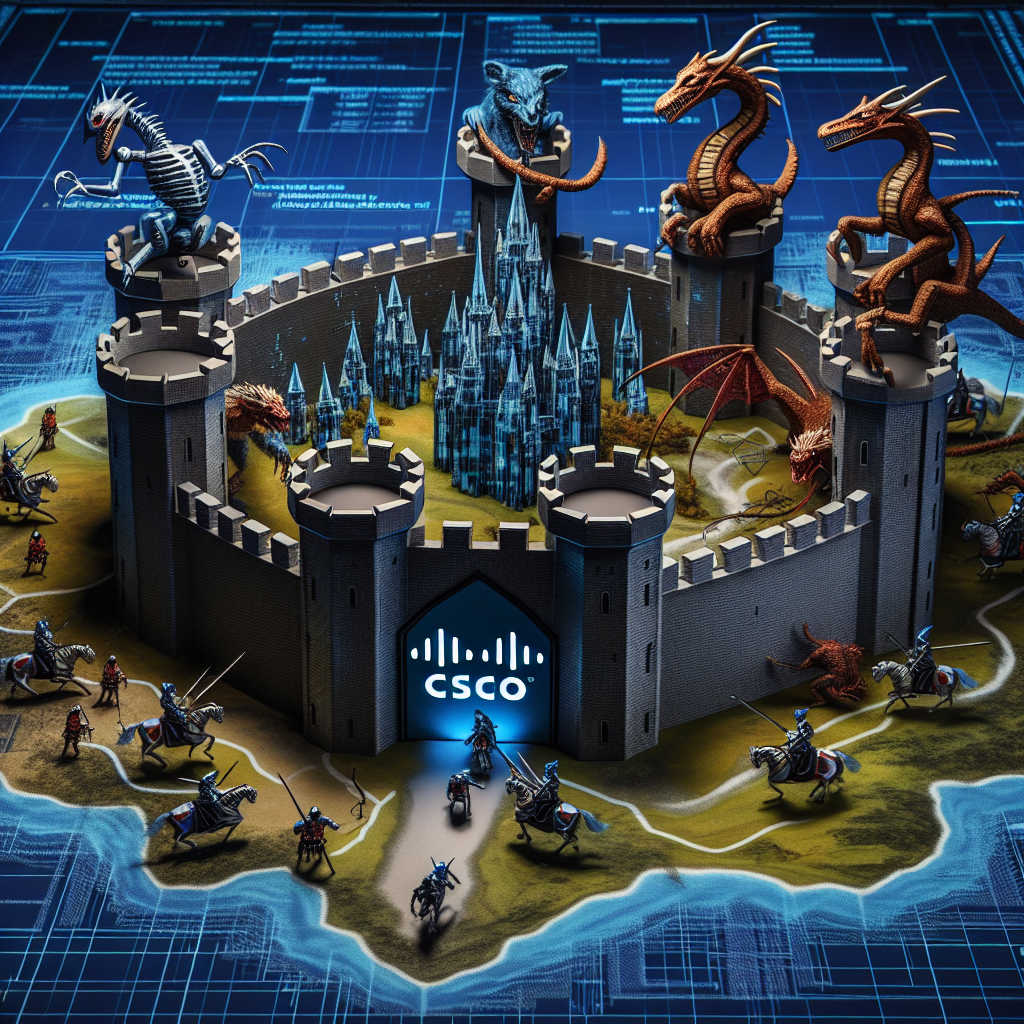
Cisco’s Role in Protecting Organizations from Cyber Threats
In today’s digital age, cyber threats are a major concern for organizations of all sizes. From data breaches to ransomware attacks, the consequences of a cyber attack can be devastating. That’s where companies like Cisco come in. As a leading provider of networking and cybersecurity solutions, Cisco plays a crucial role in helping organizations protect themselves from cyber threats.One of the key ways Cisco helps organizations defend against cyber attacks is through its comprehensive range of cybersecurity products and services. From firewalls and intrusion detection systems to advanced threat intelligence tools, Cisco offers a wide range of solutions designed to safeguard organizations’ networks and data from malicious actors. By implementing Cisco’s cybersecurity solutions, organizations can strengthen their defenses and reduce the risk of falling victim to a cyber attack.
In addition to its cybersecurity products, Cisco also provides organizations with valuable insights and resources to help them stay ahead of emerging threats. Through its Talos threat intelligence team, Cisco continuously monitors the global threat landscape and provides organizations with timely information and analysis on the latest cyber threats. This information can help organizations better understand the tactics and techniques used by cyber criminals, enabling them to proactively protect their networks and data.
Furthermore, Cisco offers a range of cybersecurity training and certification programs to help organizations enhance their cybersecurity capabilities. By educating their employees on best practices for cybersecurity and providing them with the skills and knowledge needed to identify and respond to potential threats, organizations can further strengthen their cybersecurity defenses and reduce the likelihood of a successful cyber attack.
Overall, Cisco plays a vital role in helping organizations protect themselves from cyber threats. By offering a comprehensive range of cybersecurity products, services, and resources, Cisco enables organizations to strengthen their cybersecurity defenses, stay ahead of emerging threats, and mitigate the risk of falling victim to a cyber attack. As cyber threats continue to evolve and become more sophisticated, organizations can rely on Cisco to help them navigate the complex cybersecurity landscape and safeguard their networks and data.
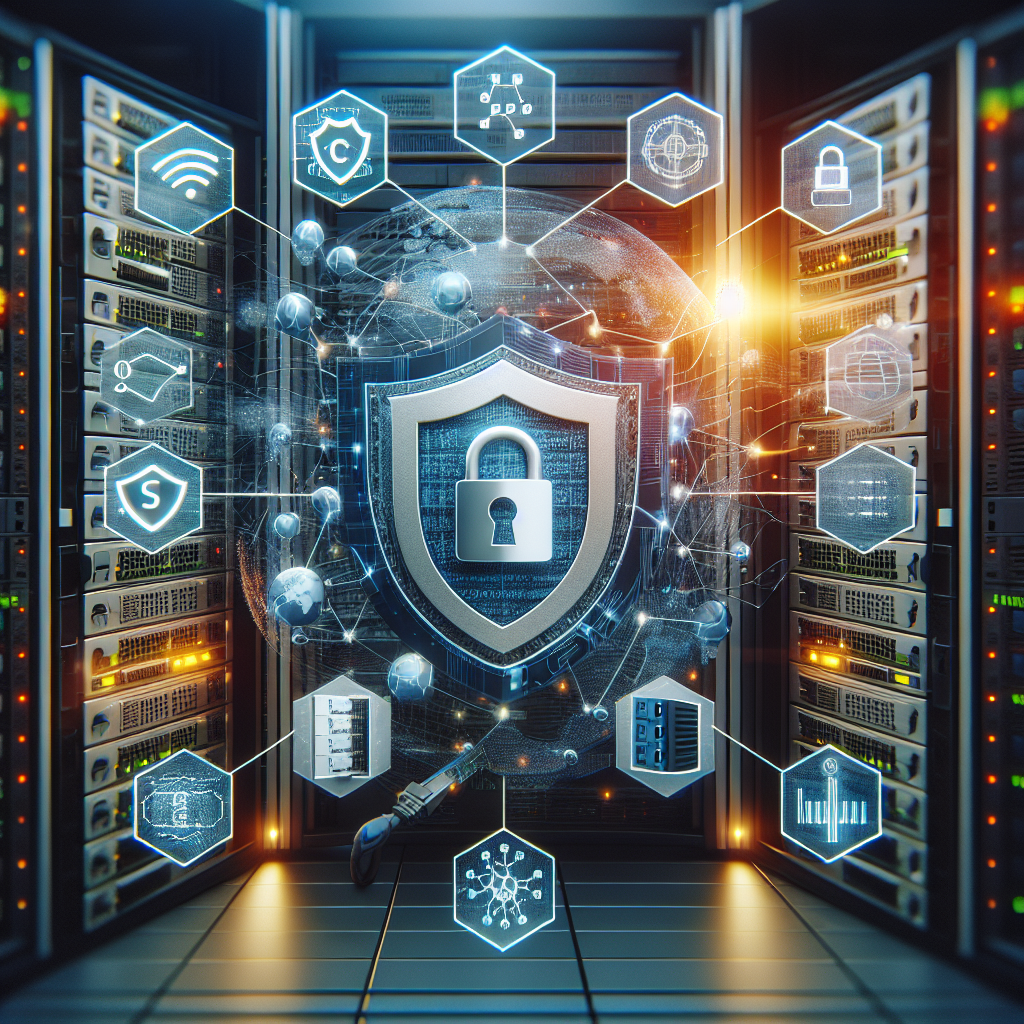
Best Practices for Securing IT Infrastructure in the Age of Cyber Threats
With the increasing number of cyber threats targeting organizations’ IT infrastructure, it has become more important than ever to implement best practices for securing IT systems. These practices not only protect sensitive data and prevent breaches but also help maintain the trust of customers and stakeholders.One of the key best practices for securing IT infrastructure is to regularly update software and systems. Software updates often contain patches for security vulnerabilities, so it is crucial to stay current with these updates to prevent exploitation by cybercriminals. Additionally, organizations should implement strong password policies and enforce multi-factor authentication to add an extra layer of security.
Another important practice is to regularly back up data and test restoration processes. In the event of a cyber attack, having up-to-date backups can help organizations recover quickly without losing valuable data. It is also essential to restrict access to sensitive information and limit the number of employees with administrative privileges to minimize the risk of insider threats.
Network security is another crucial aspect of securing IT infrastructure. Organizations should implement firewalls, intrusion detection systems, and encryption to protect data in transit. Regularly monitoring network traffic and analyzing security logs can help detect and respond to potential threats in real-time.
Employee training and awareness are also key components of a comprehensive cybersecurity strategy. Educating employees on best practices for identifying and reporting phishing attempts, social engineering, and other cyber threats can help prevent security incidents caused by human error.
Lastly, conducting regular security assessments and penetration testing can help organizations identify weaknesses in their IT infrastructure and address them before they are exploited by cybercriminals. By continuously evaluating and improving their cybersecurity measures, organizations can stay ahead of evolving cyber threats and protect their sensitive data.
In conclusion, implementing best practices for securing IT infrastructure is essential in the age of cyber threats. By staying vigilant, updating software, enforcing strong password policies, backing up data, securing networks, training employees, and conducting regular security assessments, organizations can reduce the risk of a cyber attack and protect their valuable data. Remember, cybersecurity is an ongoing process that requires constant monitoring and adaptation to stay one step ahead of cybercriminals.
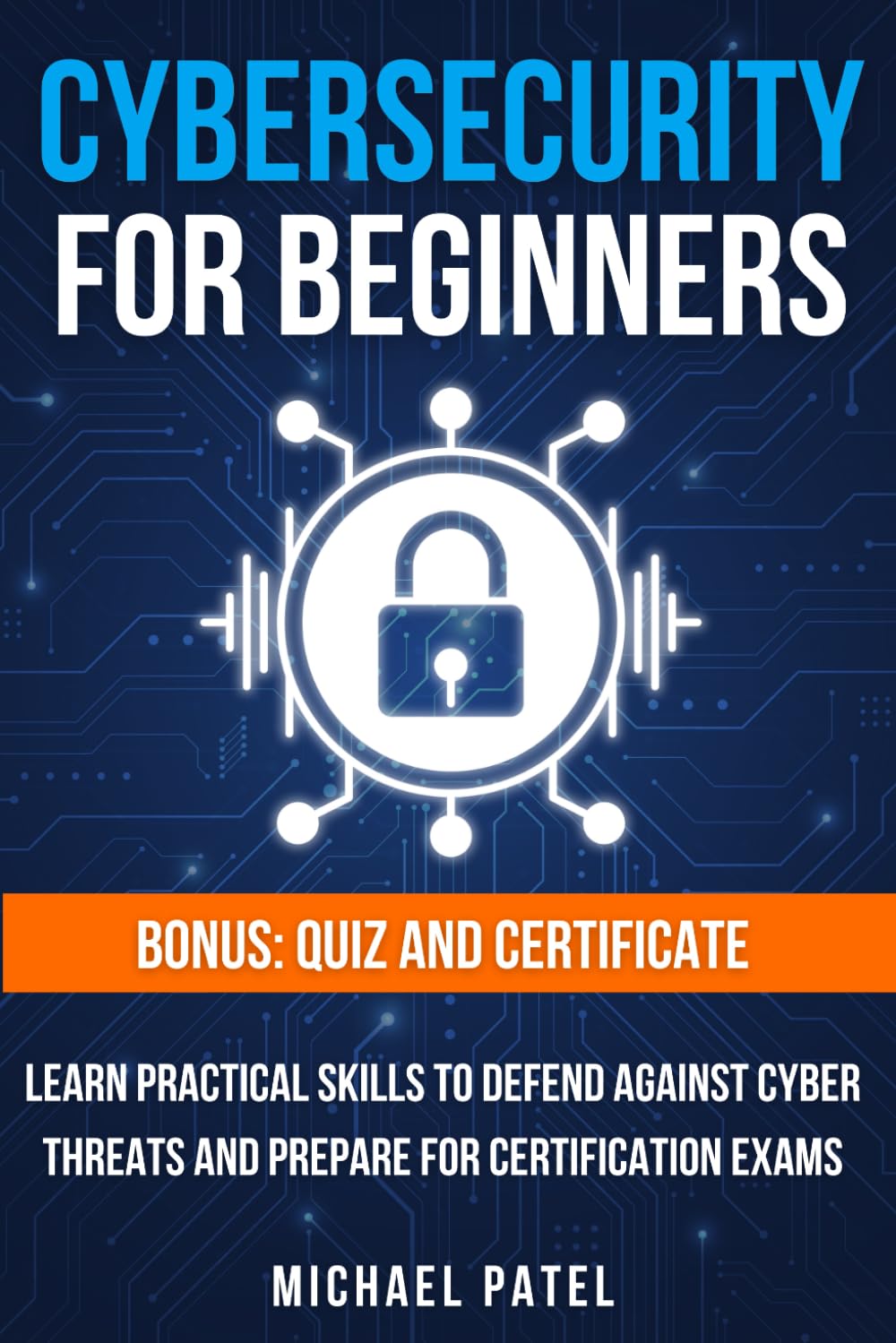
Cybersecurity for Beginners: Learn Practical Skills to Defend Against Cyber Threats and Prepare for Certification Exams
Price: $12.99
(as of Nov 23,2024 22:15:41 UTC – Details)From the Publisher










ASIN : B0DHH7D585
Publisher : Independently published (September 18, 2024)
Language : English
Paperback : 146 pages
ISBN-13 : 979-8339685760
Item Weight : 9.8 ounces
Dimensions : 6 x 0.33 x 9 inches
In today’s digital age, cybersecurity has become more important than ever. With cyber threats constantly evolving and becoming more sophisticated, it’s crucial for individuals to learn practical skills to defend against these threats. Whether you’re a beginner looking to learn the basics of cybersecurity or someone preparing for certification exams, this post is for you.In this post, we will cover the fundamentals of cybersecurity, including the different types of cyber threats, common attack vectors, and best practices for securing your devices and data. We will also provide resources and tips for beginners looking to learn more about cybersecurity and prepare for certification exams such as CompTIA Security+ or Certified Ethical Hacker (CEH).
By the end of this post, you will have a better understanding of cybersecurity and the tools and techniques needed to defend against cyber threats. So, whether you’re looking to protect your personal information online or advance your career in cybersecurity, let’s dive in and start learning practical skills to defend against cyber threats.
#Cybersecurity #Beginners #Learn #Practical #Skills #Defend #Cyber #Threats #Prepare #Certification #Exams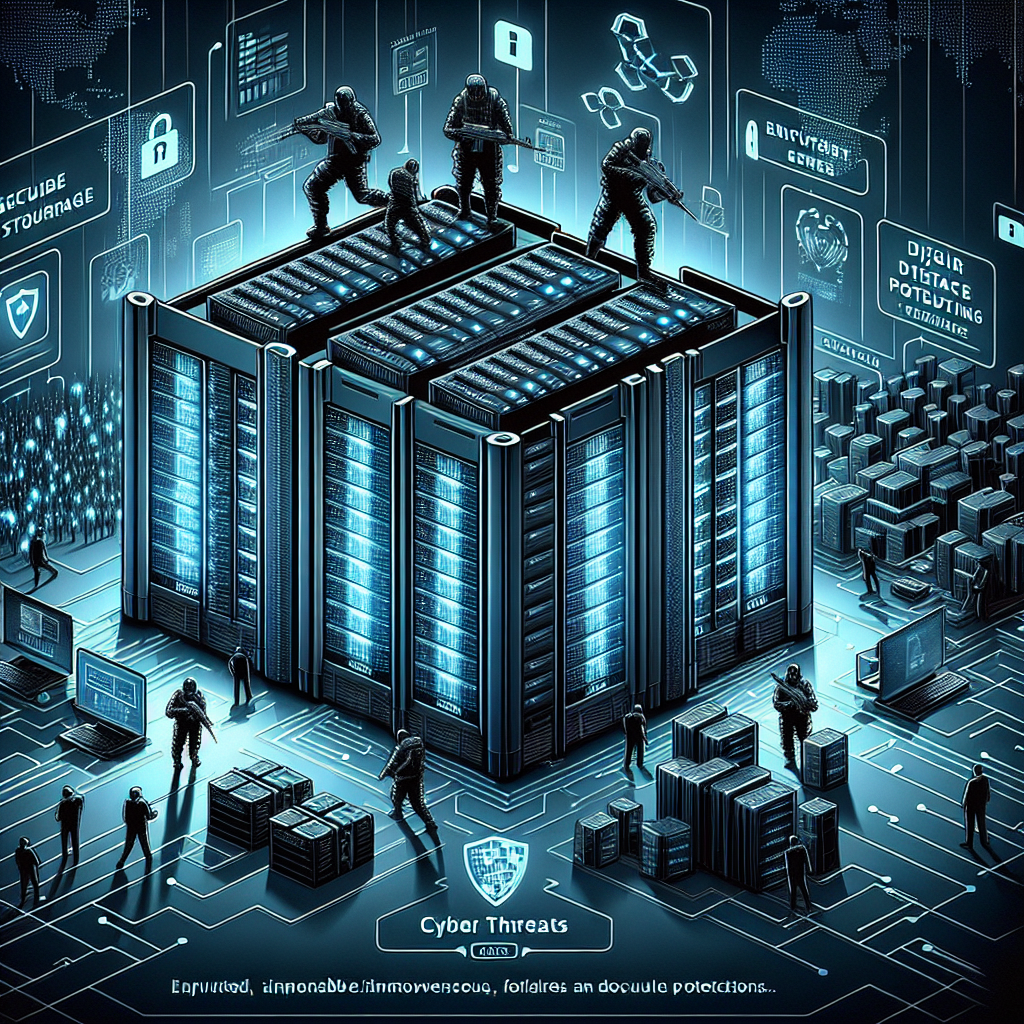
Data Storage Security: Protecting Your Information from Cyber Threats
Data storage security is a critical aspect of protecting your information from cyber threats. With the increasing amount of data being stored electronically, it is more important than ever to ensure that your data is secure and protected from potential hackers and cybercriminals.One of the first steps in securing your data storage is to encrypt your data. Encryption is the process of converting data into a code that is unreadable without the proper key. This helps to ensure that even if hackers were able to access your data, they would not be able to decipher it without the encryption key.
Another important aspect of data storage security is to regularly back up your data. By backing up your data on a regular basis, you can ensure that even if your data is compromised or lost, you have a secure copy that you can restore from. It is recommended to have multiple copies of your data stored in different locations to further protect against data loss.
Implementing access controls is also crucial in securing your data storage. By restricting access to certain data and only allowing authorized users to access sensitive information, you can minimize the risk of unauthorized access and data breaches. It is important to regularly review and update access controls to ensure that only those who need access to the data are able to do so.
Regularly updating your software and systems is another key component of data storage security. Hackers are constantly developing new ways to access and exploit vulnerabilities in software and systems, so it is essential to keep your systems up to date with the latest security patches and updates. This can help to prevent potential cyber threats from gaining access to your data.
In addition to these measures, it is important to educate employees on the importance of data storage security and how to protect sensitive information. By training employees on best practices for data security, you can help to create a culture of security within your organization and reduce the risk of data breaches.
Overall, data storage security is a critical aspect of protecting your information from cyber threats. By implementing encryption, regularly backing up data, implementing access controls, updating software and systems, and educating employees on data security best practices, you can help to ensure that your data remains secure and protected from potential cyber threats.

